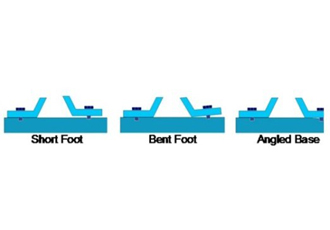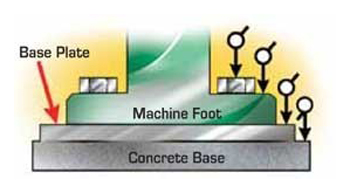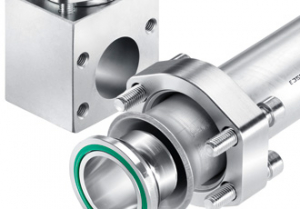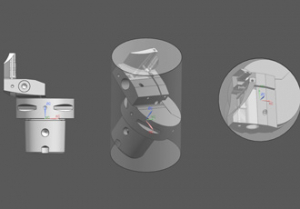Is this soft foot or are you pulling my leg?

It’s no joke that many machines operate with high levels of vibration due to soft foot. These same machines often have a decreased life span due to this condition. Soft foot is a condition that should be eliminated during the precision shaft alignment process, if you’re performing proper alignments at all.
Piece written by Tim Sorensen.
This condition can manifest in several ways; including:
- Too many shims: Using too many shims, typically more than five, under a machines feet can result in a spongy mount.
- Dirty/corroded base: The condition of the base is often cause for soft foot. Before placing a component on its mount, ensure the base is clean.
- Loose/soft base: Hold down bolts on a base should be tight. All bolts that have loosened in concrete need to be replaced to ensure a firm mount for machinery.
- Short foot: The bottom of a component’s feet are not necessarily machined to be in the same plane. Often it is found that either one or two motor feet are shorter than the others and create a soft foot condition.
- Angled foot: As well as feet are not necessarily in the same plane, they are also often angled such that one portion of the foot contacts the base before the rest of the foot.
So, from a vibration standpoint, what does this mean?
Soft foot is often presented as an elevated amplitude of 1x vibration. This increased 1x vibration is due to misalignment. Misalignment due to soft foot occurs when the feet of a machine are tightened to their base. If machines experience one of the conditions stated above, upon tightening, the bearing housing becomes distorted and misalignment of the bearing occurs.
On a motor, there are additional indications soft foot may exist. Soft foot can additionally distort the stator creating uneven spacing between the stator and rotor resulting in a 2x line frequency vibration. In the US line frequency, excluding VFD’s where this frequency can vary, is fixed at 60Hz resulting in a 2x line frequency vibration of 120Hz.
The following spectrum represents a misaligned motor with 2x line frequency vibrations.

Soft foot is not limited to motors. Soft foot of a pump may result in ½ harmonics of run speed with additional indications in the waveform with energy exerted primarily in one direction. As shown below, this pump indicates a rub axially with insufficient clearance between the impeller and housing.

On a gearbox, the clearance between two gears in mesh are subject to change resulting in misalignment of the gears.
 Soft foot, or the indication of soft foot in the vibration spectrum, sometimes is due to a soft or spongy base. The condition of a loose foot can be measured by using phase analysis. The following picture shows how these measurements can be performed. Phase analysis, if a taken across the two components where looseness exists, will present phase differences from between 90-180°.
Soft foot, or the indication of soft foot in the vibration spectrum, sometimes is due to a soft or spongy base. The condition of a loose foot can be measured by using phase analysis. The following picture shows how these measurements can be performed. Phase analysis, if a taken across the two components where looseness exists, will present phase differences from between 90-180°.
In summary, soft foot is an often-avoidable condition that exists if precision shaft alignment was not properly performed or if a base is soft or spongy.
Similar articles
More from Fixturlaser AB
- Vibration analysis: Where to start? 8th January 2020
- Is this soft foot or are you pulling my leg? 15th February 2018
- It's not the machine, it's you! 4th July 2017
- Roughing in before precision shaft alignment 2nd June 2017



ed.jpg)








Write a comment
No comments